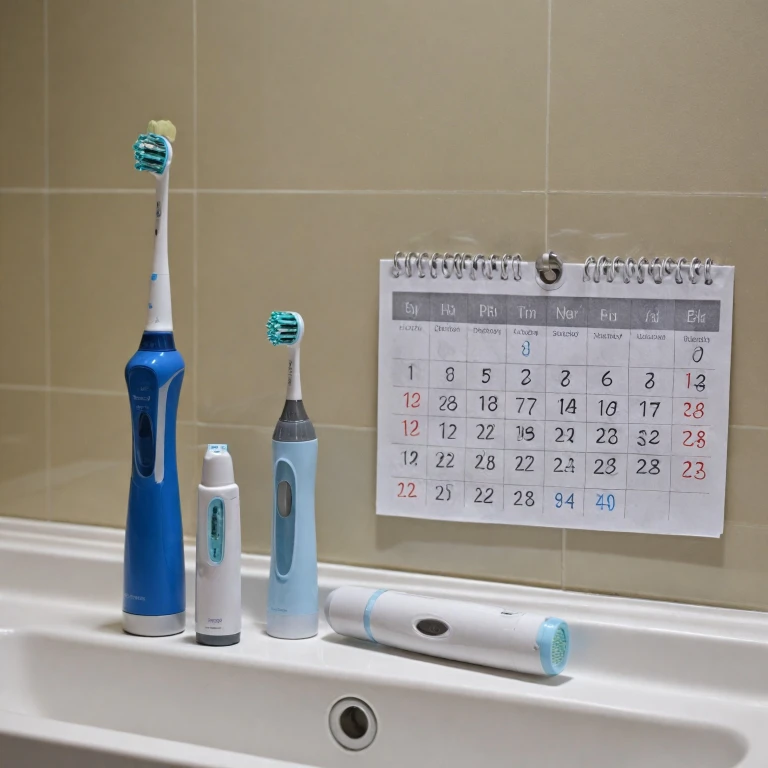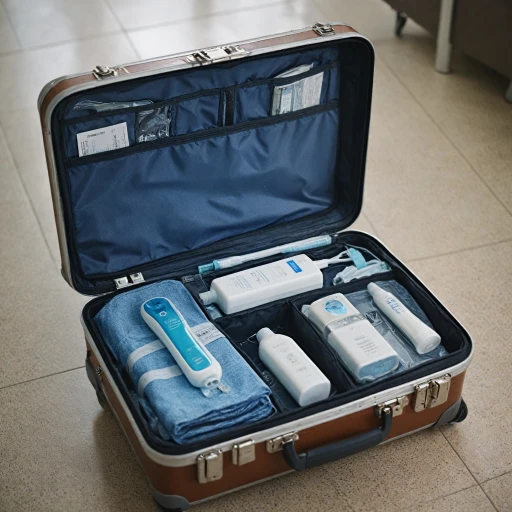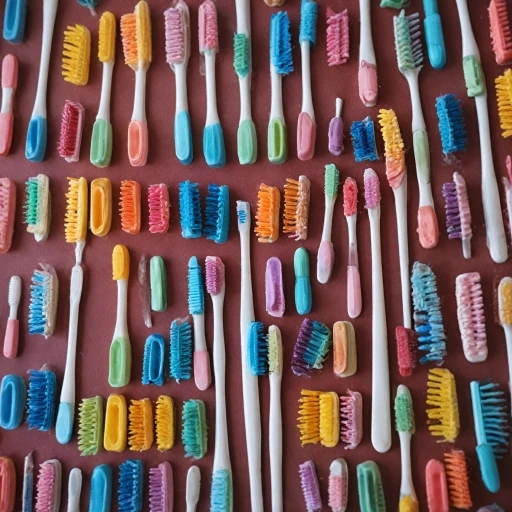Understanding the Importance of Replacing Your Toothbrush Head
The Role of Brush Heads in Maintaining Oral Hygiene
When it comes to maintaining optimal oral health, the importance of regularly replacing your electric toothbrush head cannot be overstated. These small, yet crucial components play a significant role in cleaning your teeth and keeping your gums healthy. However, as time passes, toothbrush bristles become worn and less effective at removing plaque and food debris.
In addition to the mechanical aspect of brushing, electric toothbrushes are designed to enhance the efficacy of oral care routines. But without timely replacement of the toothbrush head, their optimal performance is compromised. That's why it's essential to understand when and why you need to change your toothbrush.
Another reason to replace brush heads regularly is hygiene. Over time, bacteria can accumulate on the brush, posing a risk to your oral health. Regular replacement helps ensure that you are not reintroducing these bacteria into your mouth, thus supporting your overall health and wellness.
Being mindful of these factors will not only help in teeth whitening efforts but also ensure that your dental routine is effective. Remember, consistency in oral hygiene care is key to preventing dental issues.
Signs It's Time to Change Your Electric Toothbrush Head
Identifying When It's Time for a Replacement
Keeping your electric toothbrush in good condition is crucial to maintaining optimal oral health. The brush head plays a significant role here. So, how do you know when it's time to replace the head? Several factors can signal when a change is necessary, even before the recommended replacement period.
Worn-Out Bristles: Over time, bristles start to fray and lose their stiffness. This degradation reduces the toothbrush's effectiveness in cleaning your teeth and gums. Regularly inspect the bristles; if they appear visibly worn or matted, it's time to replace that brush head.
Change in Color: Some toothbrush heads come with a color indicator on the bristles. This feature fades over time, serving as a visual cue to replace the head. If the color is significantly diminished, it's probably overdue for a new one.
Reduced Cleaning Efficiency: If you notice a decline in the cleanliness of your teeth or an increase in plaque buildup, your brush head may no longer provide the cleaning power needed. This change can often occur before the three-month mark, depending on your brushing habits and technique.
Presence of Bacteria: Over time, bacteria can accumulate in bristles, impacting both your oral health and the effectiveness of your brush. If your toothbrush head never seems to get quite clean or has a persistent odor, it's prudent to replace it sooner rather than later.
Regularly evaluating the condition of your toothbrush head and being mindful of these signs ensures that you remain proactive in your oral care regimen. This maintenance helps you achieve the best results and enjoy the full benefits of modern electric toothbrush technology.
Recommended Replacement Frequency
Optimal Frequency for Replacing Your Brush Head
Establishing a regular schedule for replacing your electric toothbrush head is crucial for maintaining effective oral hygiene. Over time, the bristles on the brush head become frayed and less efficient, impacting their ability to thoroughly clean your teeth and gums. According to dental professionals, these changes typically occur around every three months. Consistent replacement ensures that you reap the full benefits of your toothbrush and safeguard your oral health. Waiting too long to replace your toothbrush head can lead to a buildup of bacteria on the bristles, which may compromise your oral care routine. Therefore, aligning with the recommended timeframe is key. Regular changes not only maintain the cleaning power of your brush but also contribute significantly to achieving optimal oral health and even teeth whitening results. For those eager to enhance their oral care practice, staying informed on the condition of your brush heads—as well as the unique features of various replacement heads—can make a difference. Maximizing the reach of your electric toothbrush can be part of your strategy for comprehensive dental care. By incorporating these practices, you're investing in both your oral hygiene and overall well-being.Factors Influencing Replacement Frequency
Factors Affecting When to Change Your Toothbrush Head
The lifespan of a toothbrush head isn’t set in stone. Several factors play into how often you’ll need to replace your electric toothbrush head. It’s crucial to understand what affects this timeline to maintain optimal oral health.
- Frequency of Use: If you brush more often than the standard twice a day, you’ll likely need to replace the brush head more frequently. Intensive use can lead to faster bristle wear.
- Brushing Technique: The way you brush your teeth can impact how quickly the bristles wear out. Using excessive pressure or incorrect technique can contribute to faster deterioration.
- Oral Hygiene Habits: Good oral hygiene practices include regular brushing, flossing, and dental check-ups. If your routine is comprehensive, your brush heads may retain effectiveness a bit longer, but remember, bristles inevitably wear down with time.
- Quality of the Brush Head: Higher quality brush heads might offer longer use and better performance over time. Investing in reputable brands can mean you replace your brush heads less frequently.
- Health Conditions: Certain conditions, like braces or other orthodontic devices, can influence how you care for your teeth. In such cases, special electric toothbrushes might be recommended, potentially impacting how often you should change heads.
- Material and Bristle Durability: Not all bristles are created equal. Softer bristles may wear out faster, while slightly firmer ones, designed for durability, can last longer.
Understanding these factors helps decide how often to change your brush heads, ensuring your toothbrush effectively maintains your oral hygiene. Alongside these considerations, regular assessment of bristle wear remains essential. This vigilance prevents bacteria buildup, maintains teeth whitening effectiveness, and ensures consistent oral care.
Choosing the Right Replacement Head
Selecting the Best Replacement Head for Your Electric Toothbrush
When the time comes to replace your electric toothbrush heads, choosing the right one is crucial for maintaining optimal oral health. With a variety of options available, it’s essential to consider several factors to ensure you are getting the best match for your dental needs.- Compatibility: Not all replacement heads fit every electric toothbrush model, so it’s important to verify compatibility. Check the manufacturer’s specifications or packaging to confirm that the replacement heads are designed for your specific toothbrush model.
- Bristle Type: The type of bristles can affect the cleaning efficiency. Soft bristles are generally recommended for most users as they are gentle on the gums and enamel. Hard bristles might seem to provide a deeper clean, but they can be harsh and damage dental tissue over time.
- Special Features: Some replacement heads come with additional features such as teeth whitening capabilities, micro pulse bristles, or specific designs aimed at enhancing cleaning efficiency. Consider your oral health priorities to decide which features are most suitable for you.
- Brand Preference: While some people prefer to stick to the original manufacturer’s replacement heads, others explore third-party options that might be more cost-effective or offer unique benefits. It’s important to weigh the pros and cons of each option, including performance reviews and sale price.
- Design and Size: Compact or smaller brush head designs can provide better access to hard-to-reach areas such as between teeth and along the gum line, ensuring a thorough clean.
Maintaining Your Electric Toothbrush for Longevity
Keep Your Electric Toothbrush in Tip-Top Shape
To ensure your electric toothbrush serves you well for as long as possible, regular maintenance is key. By taking a proactive approach to care, you not only enhance your oral hygiene but also extend the lifespan of your device.- Keep it Clean: After each use, rinse the toothbrush head thoroughly under running water to remove any toothpaste residue and debris. This simple habit prevents bacteria buildup and ensures optimal oral health.
- Dry Properly: After rinsing, shake off the excess water and store your toothbrush in an upright position to air dry. This reduces moisture accumulation, which could otherwise harbor bacteria and mold.
- Inspect Regularly: Keep an eye on the bristles. If you notice fraying or discoloration, it's time to replace the brush head, even if it hasn’t been three months. Timely replacement ensures effective cleaning performance.
- Avoid Hard Brush Bristles: Opt for soft or medium bristles as they are gentle on the teeth and gums. Hard bristles can wear down enamel and irritate gums, affecting your dental health in the long run.
- Store Safely: Store your electric toothbrush away from the toilet and ideally covered with a brush holder to minimize exposure to airborne bacteria.
- Charge Wisely: Be mindful of the charging habits that could impact battery performance. Follow the manufacturer's instructions for optimal battery life.



